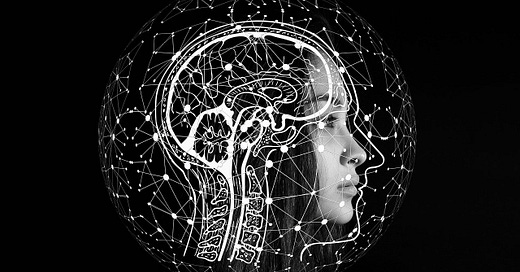Why you need a Second Brain, and why it's not what you think
How to retain every piece of content you consume and share your most meaningful insights
A decade ago, I delved into the productivity rabbit hole and quickly encountered David Allen’s Getting Things Done. In his albeit complicated system, Allen recommends that we capture every thought, idea and to-do so that our brain can be free to generate ideas, instead of holding them.
Capturing thoughts seemed like a great idea, but how exactly are you supposed to do that? How should you structure these tidbits of information? Into what app? I tinkered with several throughout the years, Evernote, OneNote, OneDrive and so many more. Nothing seemed to work, because they were all blank slates and I did not know how to structure all this data.
Introducing a new framework
Last year, I came across a video by Ryder Carroll, creator of the Bullet Journal method, introducing Tiago Forte’s concept of a Second brain. A personal knowledge management system aimed at capturing your greatest ideas, the content you consume, and (that was what interested me most), how to express these ideas effectively afterwards.
Tiago started teaching his method on his blog, in an online course, on Youtube, and later in book form. His book was my first intro to his method, and that’s where I’d start if I were curious about it, as you might be.
In his book, Tiago solved the biggest issue I had with capture, and that was how to structure my data. His framework, called PARA, is so simple!
P stands for Projects, anything you would be working on currently would be considered a project. Anything actionable.
A stands for areas, such as home, career, gardening, or any area of your life that you would need to save information about.
R stands for resources, information that is not actionable, unrelated to an area, but that you want to keep for future reference.
A stands for archives, anything that is no longer actionable or relevant.
The idea is to structure your data, in any notetaking app of your choice, following this framework. Four folders that would keep all your information neatly tucked away. I have to add that your notetaking system must be highly searchable to make this system functional and easy to use. Most notetaking apps have a search feature nowadays. Oh, and if you are unsure what app you should be using, Tiago made a great video to help you choose according to your tailored learning style.
Tiago’s next book (now in preorder) is a deep dive into PARA. I can’t wait to get my copy!
What should I keep in my second brain?
The acronym CODE names the other component of the Second Brain methodology. Capture, Organize, Distill and Express (the part I’m most interested in).
Capture is achieved by collecting all meaningful information into your system. Anything that resonates. I like to use an inbox in my notetaking app of choice and clip from the web anything relevant that I want to keep. You can also use Readwise to automatically capture your Kindle highlights, podcast excerpts and even highlights from the web or from pdfs. It syncs seamlessly your notes across all platforms.
Organize is simply to take the snippets you’ve captured, and attribute them to their proper PARA folders.
Distill is interesting. What do you do once you’ve captured all these notes? How do you know what’s essential about them? I’d say the best way to easily explain this concept would be to refer you to Tiago’s blog post on the subject. It really is worth diving into.
What do you do with all these notes?
Then comes Express. Once you’ve amassed plenty of interesting facts and data, how can you communicate what you’ve learned with the people around you? That is honestly my favourite part. It’s how this blog came to be! I like to learn about all kinds of subjects, and when I’m super passionate about something, I have to share it! Having a proper structure for my notes allows me to easily summarize what I’ve learned in order to communicate it effectively.
For the longest time, Evernote was my Second Brain of choice. I stored a decade of notes in the app, but since the recent changes, I’ve lost trust in the app makers. I discovered Notion and fully transferred 10 years of notes into my new system. If you’d like to know more about how I use Notion as my Second Brain, leave a comment below!
Having a formal framework to store, organize and use my copious notes has been a game changer in easily retrieving what I keep, making sense of what’s important about it, and being able to synthesize what I learn so that I can share it. I will be using my Second Brain for decades to come and I am truly grateful for the method. Have you implemented some sort of a Second Brain of your own? How’s it working for you?
This is a free preview of my paid content offered every Wednesday here on Substack. For less than a dollar each week, receive a long-form article about productive living and Bullet journaling straight to your inbox. Sign up for a free trial right now!
To learn more :



